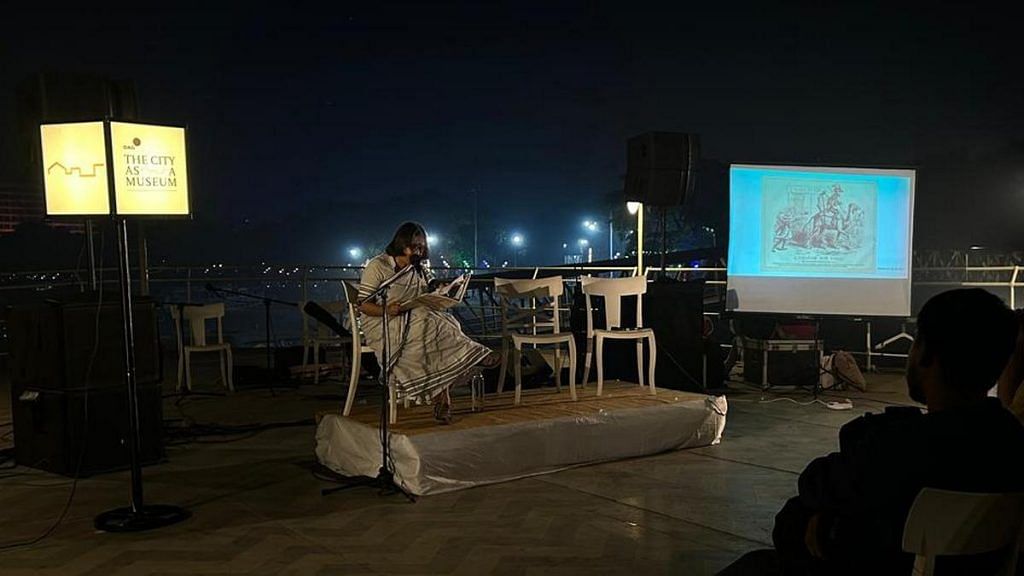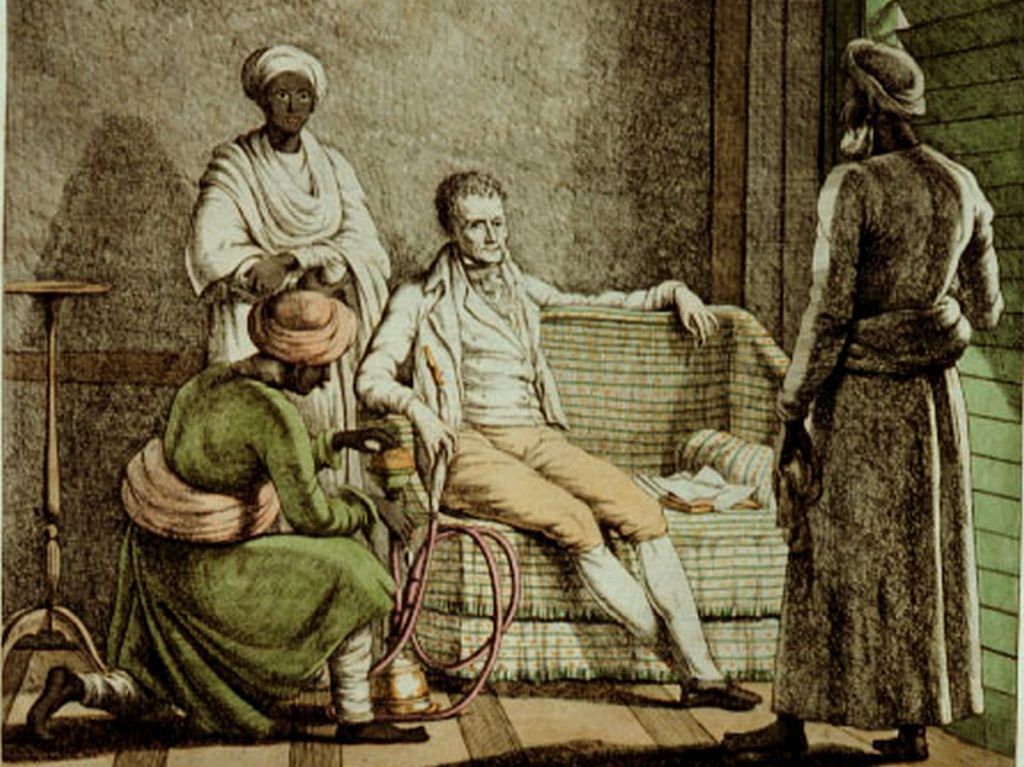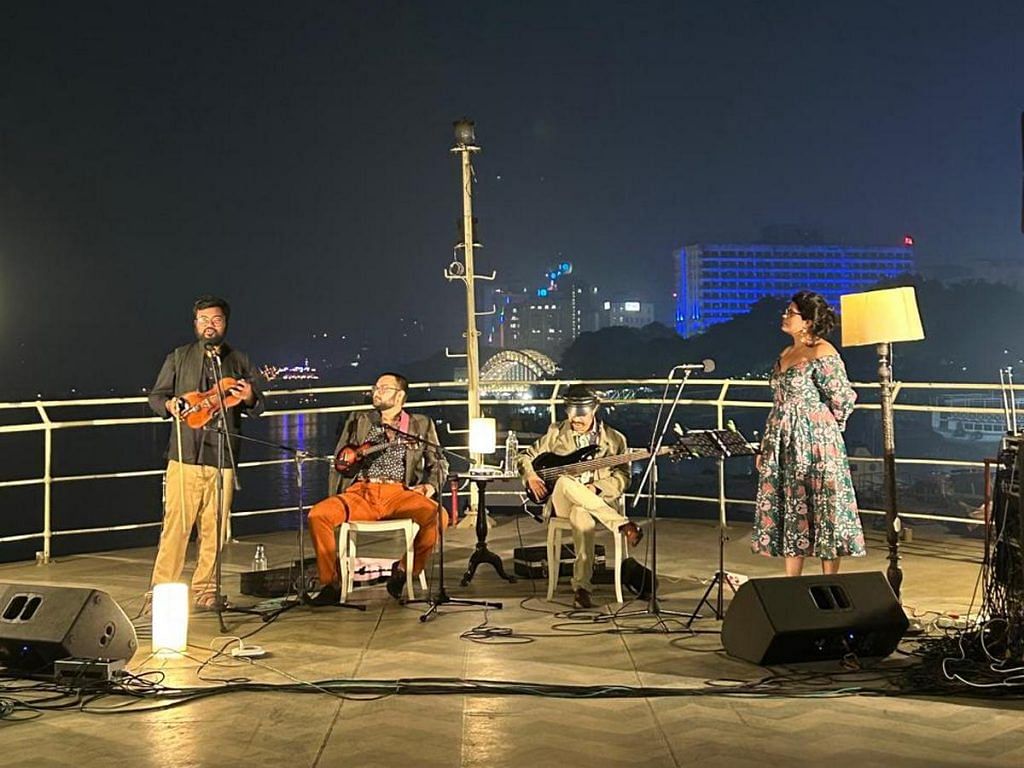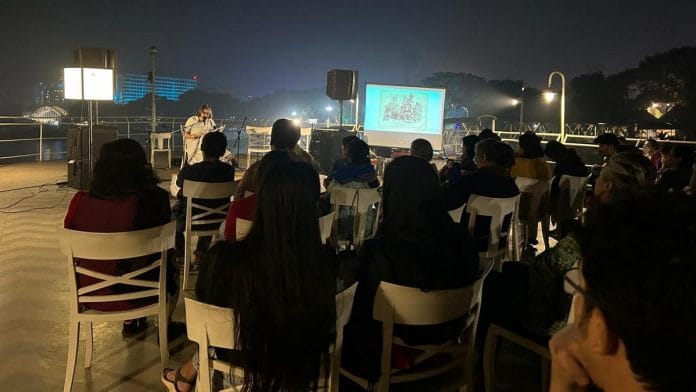Kolkata: In colonial Calcutta, not all Europeans lived in grand mansions or strolled Park Street in tailored suits. Stranded sailors, drunken drifters, and artists without work permits also lived in the fringes of the city. Many brawled in Lal Bazar, scavenged for scraps, and left behind traces of their precarious lives in paintings and forgotten archives.
It was this “White Other” that took centre stage on a chilly Wednesday evening as part of DAG’s fourth annual 10-day “City as a Museum” festival, which started on 16 November. Aboard the Bengal Paddle—a restored 1940s steamer and the country’s only riverine museum—historian Sarmishta De took the audience through art, archival records, and anecdotes to reveal the lives of these marginal Europeans.
And they even had a class system among themselves.
“The marginal society was not recognised by the elite community of Europeans settled in Calcutta,” De said. “But even the marginals maintained a hierarchy within themselves. The ones on top of the marginal society didn’t want to mix with the lowest strata of the marginals.”
With the Howrah Bridge glittering in the background, De explained that many of these European migrants were skilled workers or artists who came to India seeking better livelihoods under the flourishing imperial economy. But they faced hardships after failing to get work certificates from the British East India Company, which had its capital in Calcutta.
De cited the Flemish artist FB Solvyns, who lived in Calcutta from 1791 to 1803, as a prime example. Without the sanction of the East India Company, Solvyns quietly documented Indian life under the radar. However, he was the cream of the crop among the “marginals”.
“The archival evidence suggests that the lowest strata of the marginals would eat the leftovers of the tiffins of the Europeans around present-day Dharmatala as they didn’t have enough money to afford food,” De said. “Solvyns was on top of the marginal section and didn’t mix with the lowest marginals.”
Speaking at the event, Vinayak Bose, DAG arts engagement executive, said that the City as a Museum festival aims to “connect the practices and lives of artists to the various narratives of the city,” with Solvyns serving as a focal point for stories of unsanctioned Europeans who moved through Calcutta in the 18th and 19th centuries.
Also Read: Manipuri rice & Kerala pork on the same plate—Delhi festival celebrates unity of the regions
Sailors adrift
The Hooghly River didn’t just carry trade ships to booming Calcutta, but washed ashore European seamen who became the flotsam and jetsam of the city—drinking in punch houses, picking pockets, and brawling.
“From the early 19th century, unemployed seamen were present in the city,” De said. “In 1821, the Chief Secretary to the Government alerted the Board of Trade that unemployed British seamen were boarded in abandoned ships on the river, waiting to be employed.”
The devastating cyclone of 1864, which wrecked numerous ships, also dramatically increased the numbers of unemployed seamen.
According to archival data, 1,043 ships docked at Calcutta Port in 1863-64, carrying 27,000 sailors. Of these, 5,000 stayed behind, unable to find new work or return home. Many quickly ran out of luck and money and became part of the city’s White subalterns.
De noted that while the colonial rulers attempted tried to hide their “unruly brothers” to maintain their veneer of superiority by packing them off to jail and workhouses, some Indian writers observed them closely.

She cited eminent playwright Amrit Lal Bose’s memoirs, which described the ‘scandalous’ antics in the Lal Bazar area, now the site of the Kolkata Police Headquarters. Bose wrote of how liquor shops lined the streets from Lal Bazar to Bentinck Street. Drunk sailors hung around a boarding facility called the Sailor, dangling their legs from parapets, climbing light poles, and sometimes robbing babus returning home.
They snatched umbrellas, fought on corners, and created such havoc that the East India Company had to recruit policemen especially to keep them in check, De said.
Photos from the West Bengal State Archive show soldiers from even Australia and America crowding punch houses after long sea journeys.
“Marginal Europeans, after receiving their wages, would immediately enter the punch houses. They’d exhaust their salary and then live as vagrants,” De said.
Also Read: Book launch sparks debate on Western gaze in Tulsidas, Guru Nanak, Bulleh Shah translations
An artist in the grey zone
In a self-portrait, FB Solvyns depicts himself lounging on a sofa with three Indian attendants catering to him. But even he never managed to get a home in the posh areas of Park Street or Chowringhee, where the elite resided. He eventually settled in Dharmatala, a grey zone straddling the city’s ‘white’ and ‘brown’ areas.
Socially, he was neither destitute nor a vagabond but firmly positioned with the ‘marginals.’ This status, in a way, gave him the leeway to observe Indian life more closely.

“Solvyns, who didn’t have a work permit, found the freedom to explore the city at his will,” De said.
The audience got glimpses of Solvyns’ paintings, which focused on Indian culture and traditions —but never reflected his own invisiblised place within European society.
The evening wrapped up with sailor tunes performed by a jazz band called The Big Other, as the audience members enjoyed chai and samosas by the Hooghly.

For Debalina Datta, an alumnus of Presidency College, the event was an eye-opener.
“I majored in history, but back in school or college, there wasn’t much written about marginalised Europeans or the history of Calcutta under colonial rule,” she said. “It was very interesting to see the archival photos and hear about how marginalised Europeans also made place for themselves in Calcutta.”
Jadavpur University student Adrija Das found the anecdotes especially evocative.
“I could picture the areas around Lal Bazar where these seamen would settle,” she said. “It’s as congested today, but imagining those Europeans living in those buildings, spending their wages on liquor and pickpocketing is quite something else.”
(Edited by Asavari Singh)






